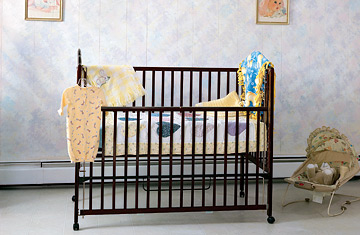
The pregnancy-center clinic, with its new ultrasound machine, has been open only since December, but already the staff can count the women who came in considering an abortion and changed their minds: five women converted, six lives saved, they declare, since one was carrying twins. “They connected,” nurse Joyce Wilson says, recalling the reaction of the women who saw the filmy image of their fetus onscreen. “They bonded. You could just see it. One girl got off the table and said, ‘That’s my baby.'” “Another got up,” Deborah Wood says, “and said, ‘This changes everything.'” Wood is the CEO of Asheville Pregnancy Support Services in Asheville, North Carolina, one of the thousands of crisis pregnancy centers in the U.S. that are working to end abortion. Hers is the new face of an old movement: kind, calm, nonjudgmental, a special-forces soldier in the abortion wars who is fighting her battles one conscience at a time. Her center helps women navigate the social-service bureaucracy, sign up for Medicaid and begin prenatal care. She helps pregnant girls find emergency housing if their parents threaten to throw them out. Free pregnancy tests and ultrasounds are just the latest service. “They’ve been fed these lies, that it’s just a bunch of cells that’s not worth anything,” Wilson says. “But those limbs are moving. That heart is beating. You don’t have to say anything …” She brings out a black velvet box that looks as if it holds a strand of pearls. Inside are four tiny rubber fetuses, the smallest like a kidney bean with limbs, the biggest about the size of a thumb. This is what your baby looks like, she tells clients; this is about how much it weighs right now. “When we do the ultrasound, we ask the girl how she’s feeling,” Wilson explains. “I ask what she would like to put on the picture for her baby book. One girl put ANGEL. Some put the name they’ve picked out for the baby.” She points to the translucent image on the screen. “One put LITTLE MIRACLE!!!!” This bright new examining room is as good a place as any to study the anatomy and evolution of attitudes about abortion. About half of American women will face an unplanned pregnancy, according to the nonprofit Guttmacher Institute, and at current rates more than one-third will have an abortion by the time they are 45. Since Roe v. Wade legalized the procedure in 1973, no other issue has so contorted U.S. politics or confounded values. When does life begin? Who should decide? And is there anything that can be agreed on to make the hard choices less painful? Much of the antiabortion movement remains focused on changing laws, tightening restrictions one by one, state by state. But Wood and her team talk of changing hearts. They are part of a whole other strategy that is more personal and more pastoral, although to some people it’s every bit as controversial. It’s easy to support the goal: helping women facing an unplanned pregnancy. What critics challenge are the means, the information these centers give, the methods they use and the costs they ignore. Even among pro-life activists, there’s an argument about emphasis: Do you focus on fear and guilt, to make choosing an abortion harder, or on hope and support, to make “choosing life” easier? Either way, the pregnancy-center movement takes the fight over abortion deep inside some of the most intimate conversations a woman ever has.